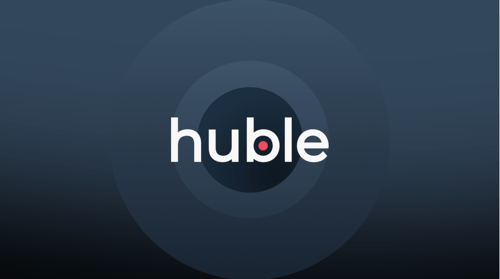In the world of business-to-business (B2B) products, sales and services, having a website is absolutely essential. Your website can sell your products and services at any time and potential prospects are not restricted to business hours. They can browse your website, investigate the content you have to offer – such as eBooks, blogs, articles, case studies and others – get in touch with your salespeople, and make a purchase whenever they want.
A website, especially for B2B businesses, whether they are SMEs or start-ups, is an excellent way to generate interest, exposure and increase business revenue. The website is the first place at which interested parties find B2B businesses - and let’s face it, we live in a world where most sales enquiries start with a Google search!
And with 81% of shoppers conducting research online before making a purchase – it’s vital that you have a website that is: responsive, well-designed, full of high-quality content and offers website visitors a way to engage with your business beyond ‘contact us’.
How much does a new website cost?
One answer to this question is: however much it needs to in order to get you results.
Another answer, according to HubSpot, is anywhere between $15,000 (approx. £11,000) and $80,000 (approx. £60,000) or let's say, £30,000 - £40,000 for an 'average SME B2B website that has 50-60 pages.
And that's just a benchmark!
For example, if you need an enterprise-grade B2B website, one which: generates sales leads for your business, houses high-quality content, is optimised for search, has a CRM built in, is responsive based on device, allows web visitors to engage on a level other than ‘contact us’, has between 50-200 high-quality web pages, and is built using a straightforward CMS, it will cost you significantly more.
You also need to factor into that cost enlisting expert help to build and optimise your website – as you may not have the in-house resource or expertise to manage such a project. Most designers may claim to “understand” SEO, but do they really? Whoever you are thinking of enlisting to help you with the build of your website, they must be able to demonstrate they understand SEO, otherwise your website will not be optimised for search and you will have paid a large amount of money for a website that people can’t find.
Finally, your website is an ongoing project and how much it costs is a changing variable. You should be continuously improving your website over its lifetime – and if you need your website to perform specific functions, engage with website visitors and deliver sales enquiries for your business, you will be looking at the upper end of the price bracket.
There are also other costs that will influence the amount of time and money you spend on your website, such as:
-
Missed deadlines: if your project quickly falls behind schedule as web pages are signed off late and deadlines are missed.
-
Extra costs: in a bid to get the project back on track, more money is spent on top of what you have already paid to speed up the process.
-
Poor results: after the best part of a year (or in some cases, more) your website finally goes live – but it isn’t what you want and in the time that it was being developed, your business has not generated any new sales enquiries or been able to do anything else as it was suspended in its old state. Your website has not been collecting any data and you have no idea if it will actually work.
-
More demands: as the website build project is in motion, you find that you want to add more functionality to your website, such as a CRM or website analytics – more things that need to be integrated and costed into the price.
And many most of these costs and delays spiral out of control with a ‘traditional’ website build. Furthermore, as traditional website design focuses on building or rebuilding an entire website page by page, we’ve seen situations where it’s taken a year or more before the website goes live and starts generating business. And all the time it's not finished you are stuck with the old website you now hate!
Think about your cashflow. Rather than building your new website and paying a substantial sum upfront - usually half - think about an approach where you "lease" your website instead of buying it. Where you can continue to improve over time.
For example, rather than buying a new car, a lot of people lease one. You make three months of down payments at the outset and then you pay a simple monthly fee. The leasing company takes care of the vehicle for you; usually doing maintenance as part of the package, ensuring your vehicle is in good condition.
So consider doing the same with your website. With this approach, you not only avoid the large upfront cost associated with traditional builds, but also have someone to look after your website, manage it, maintain it and, more importantly, improve it as you go forward – all for a simple fixed monthly cost.
Sound too good to be true?
No. It’s called Growth-Driven Design (GDD).
What is Growth-Driven Design?
Growth-Driven Design focuses on building a high-impact, high-performance website in the fraction of the time and at the fraction of the cost of a traditional website build. With GDD, you build an MVP (minimum viable product) website which is essentially the most practical and effective website for your business to launch with in the shortest period of time.
The MVP website is comprised of your highest value pages (if redesigning your website) or the pages which you have identified as high value (if starting a new build/or redesigning).
These pages will effectively drive the majority of your website’s traffic. You put these pages live and use web analytics to collect data on their performance, i.e. what website visitors are doing on the web page, what they are interacting with, conversion rates and so on, to inform your future website development and refine your next pages.
You then add new, high-quality web pages in increments over a period of time to your website, slowly expanding your website and using real-time data to inform your efforts and refine your web pages. Instead of having to live with your old website for months and months more, whilst a long redesign takes place, with GDD you have an MVP website up and running within three months – and you are generating business enquiries while the web development process is going on.
The benefits of Growth-Driven Design
The benefit of GDD is that you have a fully operational website in the fraction of the time and at a fraction of the cost of a traditional website. These costs are spread evenly over a period of twelve months at a fixed value.
For example, imagine you are looking to build a good B2B website that would probably on average cost you approximately £30,000 - £40,000? Typically you would pay 50% and then 25% and 25% on completion, while you are waiting for your website to go live. With GDD you would pay three months up front and then £2,000 a month over a period of twelve months? About the same price, but the advantage is that you spread your costs, whilst continuing to receive a service over the 12 months – which should please your finance team!
Furthermore, with GDD, you don’t suspend your HubSpot website indefinitely (as you would with a traditional build) but have it working for you as a lead generating engine while you collaborate with your team and website development agency on what to do next.
The result is a highly effective website that makes use of data to deliver better results for your business and is far more cost-effective than a traditional build. GDD will ultimately reduce your overall expenditure on a website and deliver greater value for money.









-3.png?width=500&height=320&name=Matt%20-%20imagery%20bank%20(8)-3.png)

